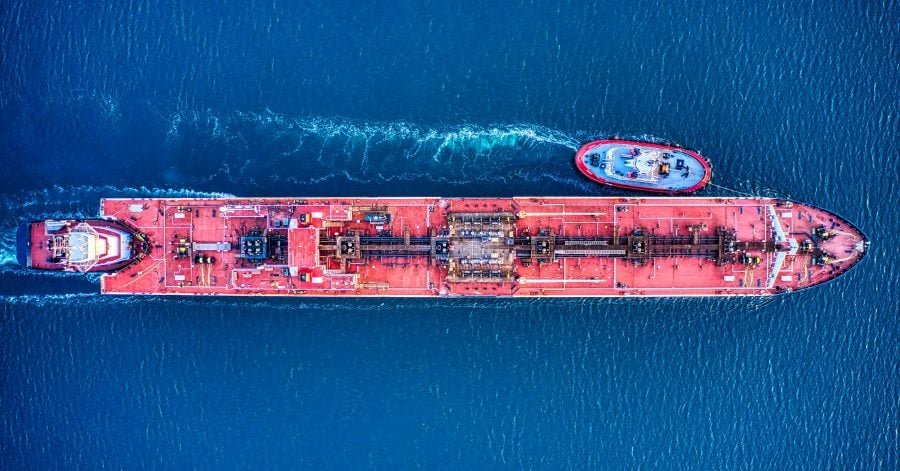Maritime shipping is one of the cornerstones of the global economy, with the total goods loaded worldwide of cargo accounting for 11.076 million tons only in 2019, according to a United Nations Conference on Trade and Development publication from 2020. In Greece, the maritime shipping industry is a major pillar of the local economy as the country is one of the five major shipowning nations, along with Japan, China, Singapore, and Hong Kong. Greece is also the world’s largest shipowning nation as it holds more than 20% of the global tonnage and around 54% of the EU-controlled tonnage.
In connection with environmental problems, as well as international law, the EU, UN’s International Maritime Organisation (IMO), and other major institutions have been implementing regulations in the industry connected to vessel traffic monitoring, port state control, ship-source pollution, as well as directives concerning the harmonization of maritime equipment. Complying with the latest regulations has long been a problem for owners, due to the high costs of modification of vessels, as well as the established traditions in the sector. But what if it is not that hard to transform the maritime industry without paying a cosmic cost?
When it comes to Greece, the local entrepreneurial sector has seen the rise of tech startups with solutions that can upscale maritime shipping. Today, the Recursive team is going to meet you with ShipReality – a local company whose mixed reality (MR) design automation software facilitates a greener energy transition, automated assisted operations, and optimized ship design. According to the company, its solutions have reduced ship owners’ costs by 50% and facilitated remote training and control during the pandemic. Georgios Bourtzos, CEO and Co-founder of the company, discussed with us the company solutions, its mission, vision, and challenges.
A chain of ideas
The initial problem identified by the ShipReality team was the lack of digital geometry data for existing ships that sufficiently slowed down the processes of design and remodification ships had to undergo to keep up with the supranational-level regulations. “Mixed Reality gives us unprecedented tools to remotely collaborate, automate, and gamify ship design. This is why we started with this idea, wanting to completely change the way ship design takes place and spent the last 3 years developing software that works directly in the 3D space,” shared Bourtzos. The other three co-founders of the startup, Alexandros Ginnis (Lead MR Engineer), Lambros Kaiktsis (Chief Scientist), and Christos Papadopoulos (CTO), are all educators in the National Technical University of Athens, where Kaiktsis is a Professor and the Vice Dean at the School of Naval Architecture and Marine Engineering.
Afterward, the idea evolved. For one, the company wanted to facilitate the ability of field experts to easily fix arising problems in the ship machinery for the long periods when ships were in the open sea spaces, which would often trouble the engineers’ access to a ship’s machinery. Then, when COVID-19 travel restrictions were set in place, troubles, related to the compulsory regulatory checks performed by authorities, arised, giving ShipReality the opportunity to once again employ the benefits of VR and MR technology and restate the benefits of remote checks. “Ships are remote complex assets traveling around the world – they have to go through regular inspections and surveys and maintenance of equipment not only by the shipowners and managers but also by the classification societies, port authorities, and equipment manufacturers,” Bourtzos explained. This is why, since the start of the pandemic, ShipReality has also been focused on facilitating a way for ensuring efficient remote check-ups, adjusting to the COVID-19 travel restrictions.
Intelligence solutions in the new remote era
In a nutshell, the company offers three main services materialized in the form of the solutions ShipMR-Design and ShipMR-Remote. ShipMR-Design is the most advanced software of ShipReality. It is a 3D CAD (computer-aided design) software for generative ship design that utilizes proprietary pathfinding algorithms that generate optimal routes in 3D space avoiding clashes (collisions) with existing machinery, working in VR for multi-user, collaborative immersive design reviews, training and MR for remote shipyard installation monitoring. While ship visualization is often performed using far less interactive 2D schemes, Bourtzos shared that the 3D model is time-saving and more efficient when it comes to fine-tuning each vessel before sending it for CPR (Construction Products Regulation) compliance check.
The ShipMR-Remote is the second software of the company. It is remote operations / spatial intelligence software with data anchoring and project management capabilities that connects on-board crew members with on-ground experts who can assist with remote support, inspections, and surveys. The solution has the benefit of enabling remote assistance, thus helping fleet teams stay on track and efficiently fix any machine problem that arises while enabling virtual audits and checks, Bourtzos added.
The future ahead
The business model of ShipReality is B2B, with options to expand by listing proprietary XR applications in marketplaces such as gaming engines. The industrial applications of ShipReality are suited for B2B enterprises as the maritime sector big players have already started implementing MR and VR technologies for commercial uses, Bourtzos shared. He also added that the solutions are yet to evolve and the next 5 to 10 years will be crucial for average industry owners to become more familiar with them. “Massive digital transformation and innovation adoption will take much longer in the shipping industry as it is one of the most conservative industries. To change the way owners operate takes a lot of effort, persistence, and time till they are comfortable with new technologies. Part of our work is to educate them on XR (VR/AR/MR) and the potential benefits of relaying capabilities and experiences from more advanced industries that have adopted such technologies,” the co-founder explained. Another obstacle the company is facing is the lack of a variety of software with suitable development kits for B2C applications. Bourtzos also noted the positive trends in the Greek ecosystem that has now started producing a range of products used in the maritime industry that were previously imported from other countries such as Japan and South Korea.
Among the main missions of ShipReality are to modernize the maritime industry, while allowing for the easy remodification of ships in the highly regulated sector, where legislators are concerned with reducing the pollution caused by ships. The ShipReality solutions are in line with the green energy conversion rules not only because they enable the reduction of the environmental footprint of the shipping sector by reducing employee traveling but because they facilitate fast and efficient ship transition to new greener propulsion. As it is already known, the IMO has set several targets for the maritime industry, including a 30% reduction in total CO2 emissions by 2030 and a 50% reduction by 2050. Not complying with these standards would leave shipowners with obsolete assets that they will not be able to charge, Bourtzos elaborated. With the sector currently evolving, ShipReality is going to continue shaping the local ecosystem, as its plans are to develop the proprietary applications of ShipReality, including its 3D pathfinding algorithm, and explore other sectors where its solutions can be implemented, with the offshore marine being one of the examples. Mixed reality technology is increasingly being used for training, machine inspections, and the creation of designs in several countries, including the UK, the US, and Singapore. Back in 2018, FLIR, the world’s largest design and manufacturing company of thermal imaging infrared cameras, introduced its first MR navigation water system. Rolls Royce, on the other hand, has introduced the concept of an autonomous ship with an intelligence system, featuring AR sensors used for navigation and obstacle avoidance.
Up to this point, ShipReality has managed to attract $230K funding, $150K by the Norwegian-based accelerator Katapult Ocean that is known for its investments in impact-tech companies operating in the blue economy, as well as $80K from angel investors.








